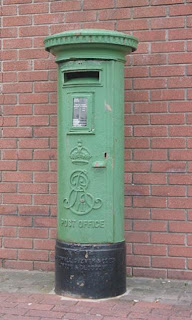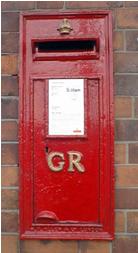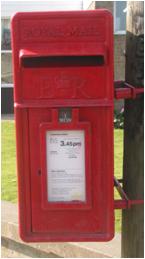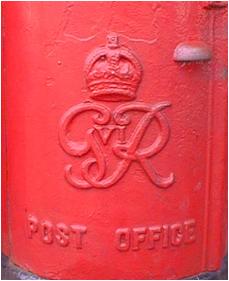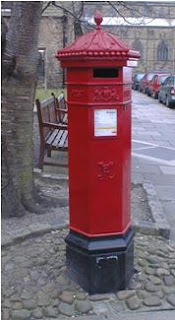Students often find it difficult to sequence events or people, yet it is crucial to understanding cause and effect, continuity and change, and most other things in history. Here are a couple of well-tried and tested ways to reinforce chronology.
Let’s start with a pillar box:
Why is it green? When was it made? Who installed it? Where was it made?
Nearly all of these questions can be answered from a close examination of the pillar box. It is green because it is in the Republic of Ireland, and was originally red, installed in the reign of Edward VII.
Now, how about these pillar boxes?
Can you put these pillar boxes in chronological order?
Each pillar box has the cipher of the monarch on it, so VR dates from Queen Victoria’s reign, and so on. Which monarch is missing from the above collection? In ‘Powerpoint’ in ‘outline’ mode it is easy to manipulate images around a page. Of course it is even easier with an Interactive White Board if you have one. This activity can be endlessly recycled using houses, modes of transport, inventions, battles, political leaders, whatever is appropriate. Used regularly as a starter activity it helps build up a sense of chronology and of linking events together.
Of course you can do this activity on paper too, as a card sort or, if you want to involve the whole class, using the Washing Line Game. Write 20 or so names, events, etc, on to individual sheets of paper, and hand them out to your class, one to each student. One at a time get them to come out to the front of the class and put their event in the right place standing along a timeline, or peg it onto a string stretched across the classroom. Get the rest of the class to ascertain whether or not the event is in the correct place. It gets very noisy, but it is very effective at reinforcing chronological understanding!
Alf Wilkinson
CPD Manager for the Historical Association and previously National Strategist for Key Stage 3 History. Alf has over 30 years history teaching experience and was lead author for Collins Key Stage 3 History resources.
